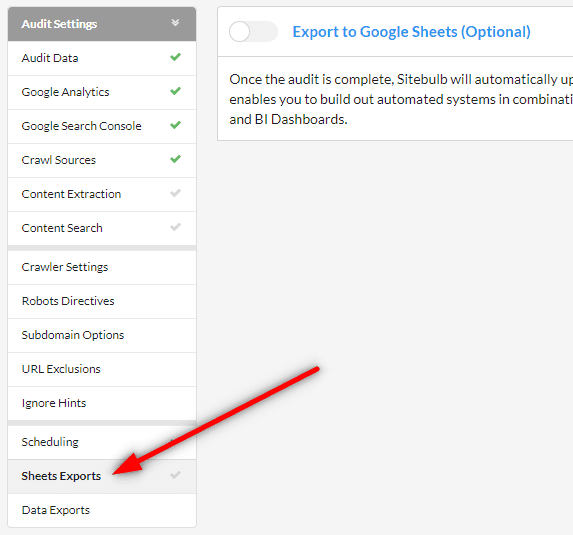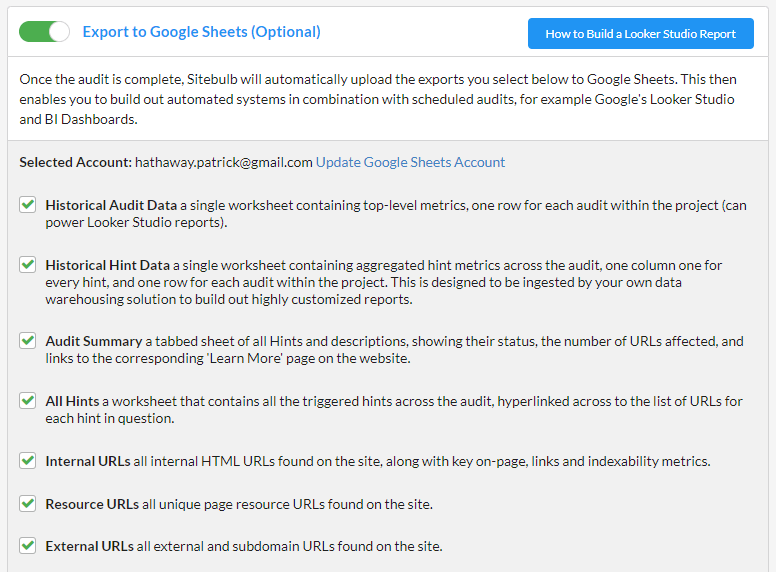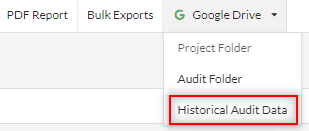You can optionally set Sitebulb to automatically export data into Google Sheets once and audit has finished running. This saves the manual legwork of doing it once an audit is complete, and enables you to build out some nifty automated systems in combination with scheduled audits and Google's Looker Studio (check out our Looker Studio guide here).
To automate uploading to Sheets, you must set this up at the project level (i.e. each project must be handled separately), which you can do when starting a new project or editing an existing project.
Once you are in the audit settings screen, click on the Sheets Exports option from the left hand menu.

Once you have enabled the option, you will then need to add a Google Sheets account to upload to.

If you already have Google Sheets accounts authenticated through Sitebulb, you can select one of these, otherwise you'll need to authorise permissions for a new account.

Once this is done, all you need to do is select from the checkbox list which options you wish to be automatically uploaded.

In a lot of cases, the first 4 options are most useful;
Whichever options you choose, Sitebulb will automatically build the exports then upload them to your Google Sheets account, as soon as the audit has completed.
Once the audit is complete, you can navigate there directly from your Sitebulb audit by using the Google Drive dropdown in the top navigation.

Google Sheets is not designed to be an enterprise level product. On bigger sites, Sitebulb CSV exports can go into many millions of rows, but Sheets is not able to handle this quantity of data. You'll find yourself frustrated with the results if you try to push everything you possibly can into Sheets, for every audit, regardless of website size.
The limits you need to bear in mind are:
In most cases, you won't even need to make a choice about this as you won't be getting near the limits. If you are, Sitebulb will warn you and offer you some options:

Be particularly careful with Links exports, as it can be easy to underestimate their size. By way of example, this is an ecommerce site with only 22,000 internal URLs, somehow has 5,800,000 internal links (hello, mega menu):

So in this case, even the '1 column' option would not allow you to push all the link data into Sheets - you'll need to switch to CSV if you want to access all the data in a spreadsheet (remember you can just use the Link Explorer instead...)